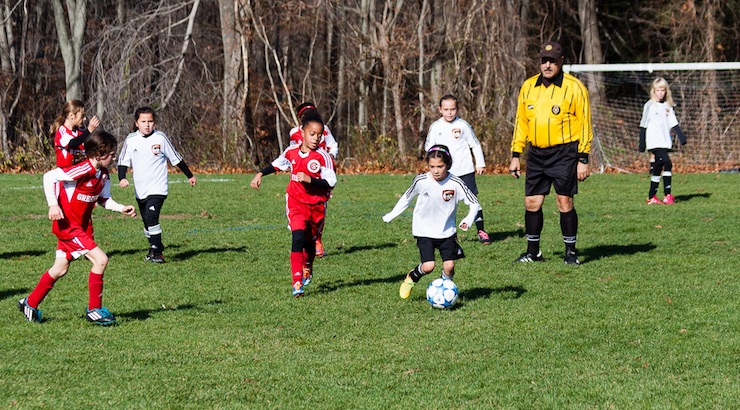Ziad Tleimat – TeamRunner’s CEO – On What Needs To Change in American Youth Soccer To Attract Millennials
CEO of TeamRunner, the leading one-stop marketplace and collaboration platform for sports events and team travel, Ziad Tleimat dives into the heart of the challenges of American soccer today.
United Soccer Coaches Convention — US Youth Soccer Workshop session with Ziad Tleimat on Friday at 11:30 AM room 106A
Soccer News: The soccer world does not have enough entrepreneurs who are in the business to help improve the lives of players and coaches — and know how to harness the power of technology to simplify often time-consuming tasks.

As the founder of Zimcode, Ziad Tleimat launched TeamRunner, a cloud-based program that improves the process of booking well-priced sports team travel. Designed to provide a better experience with less hassle and provide a better value while still offering a revenue stream to organizations — TeamRunner also gives back to the game with sports scholarships — just because Tleimat knows sports are important for kids.
While galvanizing the tech world for the largest generation using technology Tleimat has become an expert of the Millennials — the largest generation in the USA. The 2015 U.S Census data shows 75.4 million Millennials compared to 74.9 million Baby Boomers — and we know the numbers have grown.
If the Millennials are taking over the world — we need to know what they want and how they think because they have grown up tech and now have money to spend. This generation’s digital focus gave real life to the social media movement and now they are becoming soccer parents.
SoccerToday’s Diane Scavuzzo asked Ziad Tleimat for his insights on the millennials and what is important to know to reach this soccer generation.

Diane Scavuzzo: Why you think we should focus on millennials and what we need to do to increase participation in soccer?
Ziad Tleimat: There are 81M Millennials today, the largest generation in US history.
40% have children, so very soon they will be our customers — the parents paying the registration and travel fees that clubs collect. And they will be our customers for the next 20+ years.
At the same time, they have the most money to spend but are very transparent, connected but not tethered — always looking for a good deal and prefer to support businesses that contribute to good causes.
We need to make participation more fun for their kids.
If we do not tailor our businesses to the millennials, and their kids, we will struggle. And those millennials who do not have children yet will most likely join the ranks of soccer parents in the next few years.
 Diane Scavuzzo: Everyone talks about how we can increase participation in soccer. How do you think we can we grow the game in the USA?
Diane Scavuzzo: Everyone talks about how we can increase participation in soccer. How do you think we can we grow the game in the USA?
Ziad Tleimat: Right now, as you can see from the research done by the Aspen Institute, soccer in America is a middle-class sport.
To grow the game, we need to attract lower income families.
The responsibility for helping grow the game of soccer thus falls on all of us involved in the sport — but, one thing I am against is making kids at a very young age choose one sport to specialize in. Why make a 10-year-old choose between 2 sports?
All sports became very protective and selfish — this drove up the cost of participation and reduced the number of kids playing.
The focus became winning at any cost and not player development — and fun was forgotten.
We should be inclusive not exclusive.
Technology will be a great equalizer where $10 or $20 per month can give you access to AI apps that can coach technical skills much better than the average human.
 Diane Scavuzzo: How are millennials different?
Diane Scavuzzo: How are millennials different?
Ziad Tleimat: According to the Aspen Institute, soccer participation has declined a whopping 25% over the past 10 years. Combine that with a generation that is focused on a transparent, value-driven experience and is very comfortable with technology — having a preference for Artificial Intelligence sports-focused apps and you get Soccer 2.0.
The millennials will expect to have Artificial Intelligence and 2nd and 3rd generations of wearable gear.
Additional technologies will come into play, such as Natural Language Processing (NLP) — this is what Amazon Alexa uses — and 3D printing, among other ideas. 3D printing will allow parents in the future to print their own gear and training equipment custom-fit to their children’s needs — and all at very affordable prices.
NLP will let users say “Register my kid for soccer”, “I need 20 rooms in Vegas” or “how did my kid do at the game compared to his teammates?”
Right now, we are working on embedding NLP and Artificial Intelligence into TeamRunner.
We want to make life very easy while lowering the cost for all involved.
 Diane Scavuzzo: Research shows that only 34.6% of families with income under $25K have a child playing a team sport at least one day a week.
Diane Scavuzzo: Research shows that only 34.6% of families with income under $25K have a child playing a team sport at least one day a week.
Kids with family household incomes over $50K are participating at a rate of 53.7% and those who live with parents earning $100K are involved in youth sports the most with 68.4% of kids playing a team sport at least once a week. What needs to change?
Ziad Tleimat: This research is done by the Aspen Institute and the information indicates that to attract more families, especially lower income ones, the whole youth soccer model needs to be overhauled. There is lots of bureaucracy and waste.
With an economy that focuses on coherence of technologies which drives cost down — our soccer industry is far behind the times.
Additionally, the concept of variable pricing needs to be introduced. Coach’s pay should include factors such as experience. Imagine this: A player tries out; a team and a coach are recommended based on the player’s talent and needs for development.
A team is formed; a league and tournaments are recommended based on the team’s talent; all registration and travel — if any — are done by technologies working together based on the team’s budget and other constraints. No one has to call several hotels, looking for affordable rates.
 Diane Scavuzzo: Why do you believe the current US Youth Model is inefficient?
Diane Scavuzzo: Why do you believe the current US Youth Model is inefficient?
Ziad Tleimat: Coaches and players are the most important parts of soccer.
However there are at least 10 organizational layers — and each club, association, league etc. has its own 3-5 layers. I believe the most important parts of the game — the coaches and youth soccer players — are at least many, many layers removed from the national bodies which set the policies and guidelines.
The current model was put in place 50 plus years ago when we had a limited number of kids playing and the number of clubs was very small. Now we have millions of kids playing and close to 10,000 clubs. Every club, association, district and playing league has its own By-Laws and board of directors.
It has become its own version of the Titanic.
The structure is too big to maneuver and cannot be responsive to changing customer needs. Every time I hear “we have been doing this for so many years,” I know it is time for a complete redo.
But many of us know this. We are working on changing the options. We, at TeamRunner, have just released a new app www.EasyTeamTrip.com that gives team managers and teams the power when traveling.
The concept is to connect teams directly to hotels and other service providers and to have these businesses bid directly for the team’s business. This creates transparency and eliminates the middleman.
At the same time, if clubs sign as an affiliate, we share our revenues with the club, thus lowering the cost of team travel while giving back. It is transparent, logical and in line with what millennials want.







